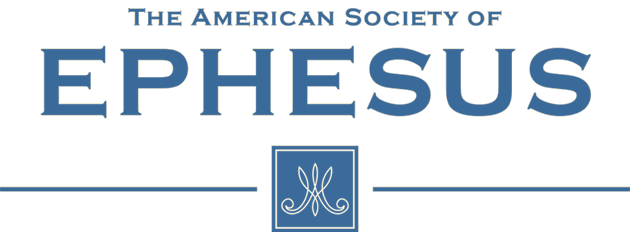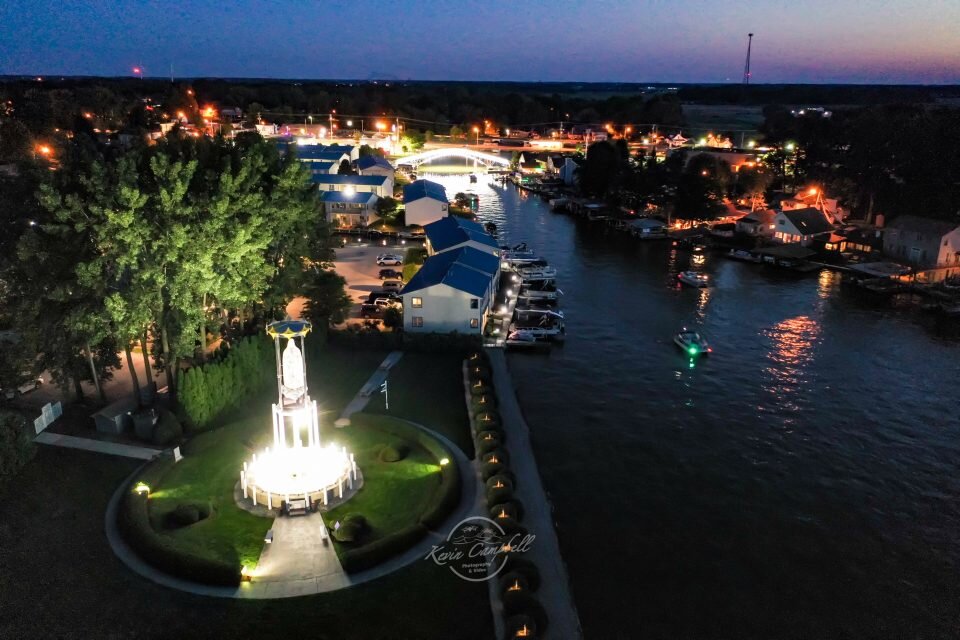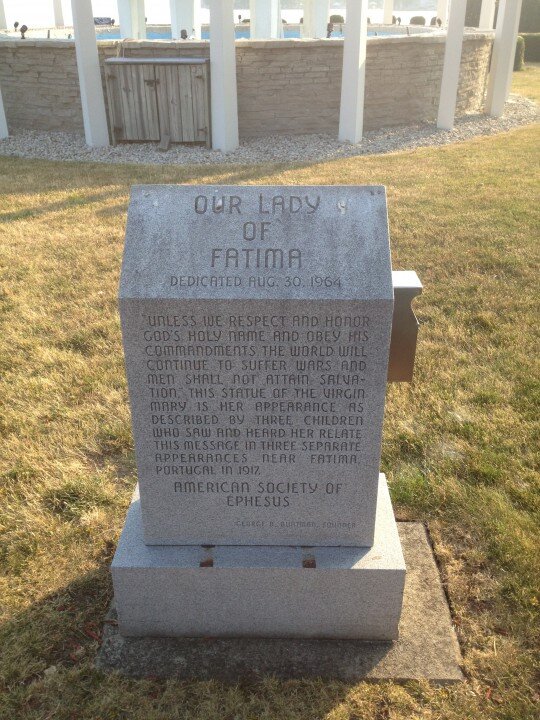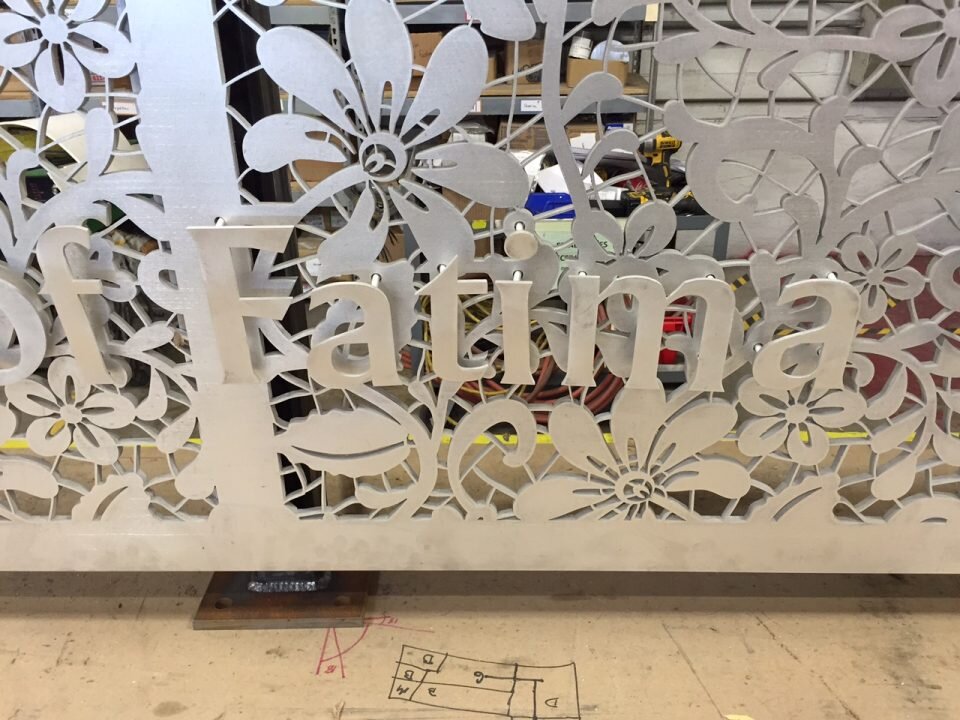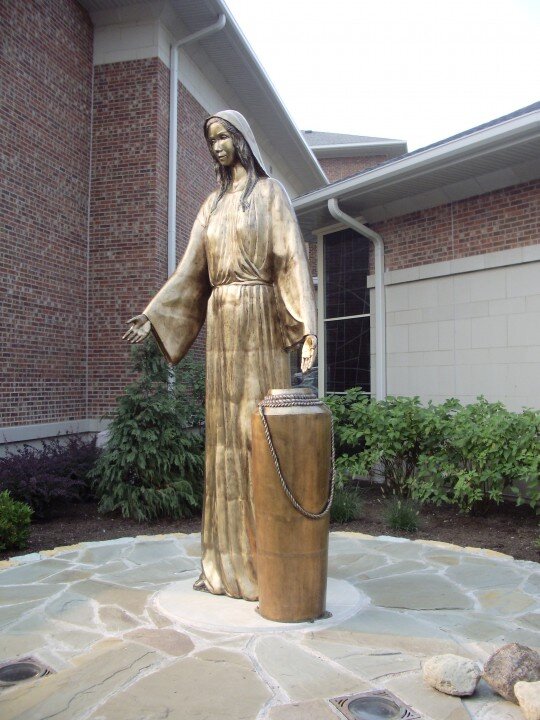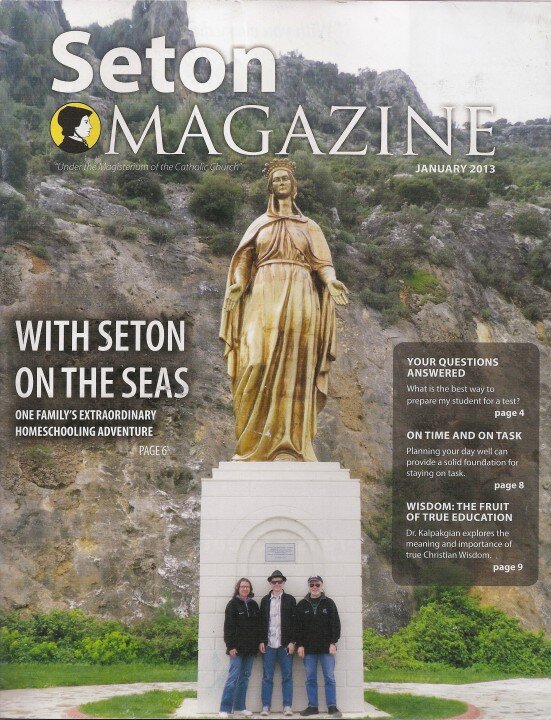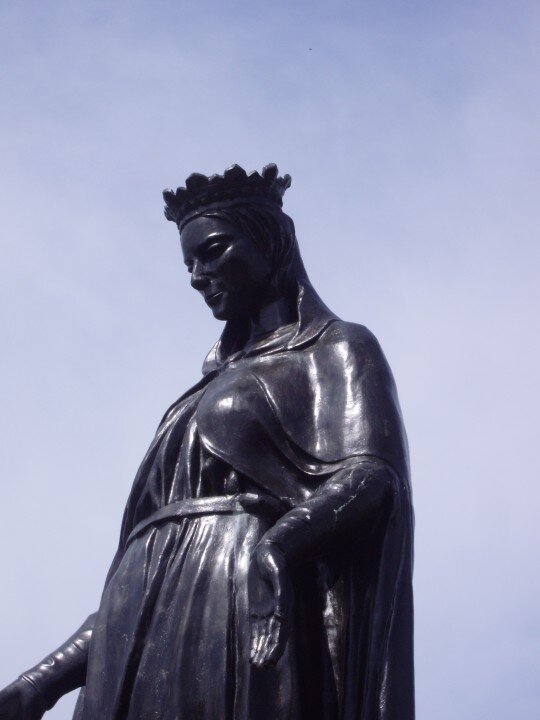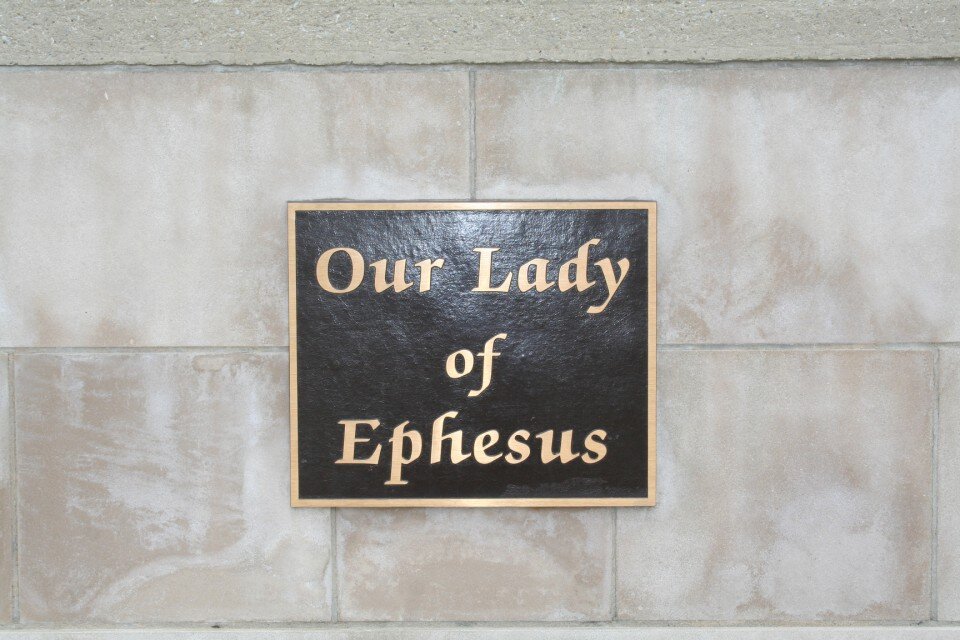Shrines
For over 50 years, the American Society of Ephesus, Inc. (ASE) has erected Christian shrines, especially those dedicated to the Blessed Virgin Mary. The first was dedicated by our founder, George B. Quatman, Sr. in August 1964, when the American Society of Ephesus erected a shrine to Our Lady of Fatima, at that time the largest statue of Mary in the world. She overlooks the peaceful waters of Indian Lake, Ohio on a site chosen by Mr. Quatman and named “St. Mary’s Point.” On August 15, 2014, Most Rev. Dennis M. Schnurr, Archbishop of the Diocese of Cincinnati, Ohio helped celebrate the 50th anniversary of the Fatima shrine (see photo above) with members of Mr. Quatman’s family.
The first statue, to Our Lady of Fatima, was erected by George B. Quatman in August 1964 at Russell’s Point, Ohio. Mr. Quatman, passed away the following month, in September 1964. The second statue is located on Bulbul Dag mountain in Ephesus, Turkey about mid-way up the winding road leading to the Home of the Virgin Mary. It was made in Turkey and dedicated in 1996. The third, a replica of the statue in Ephesus by the same artist (Ahmet Bekir Ermin), was installed in 1997 at Sidney, Ohio on the campus of Lehman High School. The most recent statue was dedicated on August 15, 2007 on the campus of the University of Dayton – a Catholic University founded by the Society of Mary (the Marianists). Another shrine dedicated to Our Lady of Ephesus was built in Washington, D.C. in the lower Crypt Church of the Basilica of the National Shrine of the Immaculate Conception.
This page shows photos of some of the ASE shrines and chapels built to date.
Our Lady of Fatima (Indian Lake, Ohio)
Our Lady of Fatima Shrine, Indian Lake (Russell’s Point), Ohio, built in 1964. The 19’-6” statue was sculpted and then cast out of fiberglass in Florida, with work beginning in February 1963. Upon completion, the statue was shipped to Ohio where it was erected atop a concrete pedestal. Mary’s robes were painted blue and white, trimmed in gold, with fluorescent paint that came alive under concealed black lighting. George B. Quatman had seen the statue of Mary at Fatima, Portugal and was inspired to build an even larger version at Indian Lake. The face of the Virgin Mary is based on a painting, reputed to be one of the several portraits attributed to St. Luke, which Mr. Quatman saw in a chapel in Jerusalem while on a trip to the Holy Land. George B. Quatman had a specific goal in building a statue of the Blessed Virgin on this site – to honor Mary’s apparition at Fatima and to improve the morals of society. He was quoted at the original dedication in June 1964 saying, “If this monument will stop just one person from using profanity, it will be worth all the effort that has been expended on it. Profanity is an insult to God.” (Lima News, June 29, 1964). Near the statue, Mr. Quatman’s son, George Quatman, Jr., erected the Stations of the Cross along the canal, which were restored in 2014 in preparation for the 50th anniversary celebration.
100th Anniversary
In 2017, to honor the 100th anniversary of the apparitions of the Blessed Mother to the three children in Fatima, Portugal (1917-2017), ASE dedicated a new entry gate and sign at the Our Lady of Fatima Shrine in Russells Point, Ohio (Indian Lake). The gate and sign were designed to represent a veil, often worn by pilgrims in Fatima and by other religious women around the world.
Mary at Wedding at Cana (Campus of the University of Dayton; Dayton, Ohio)
In John’s Gospel (John 2:1-12) we read of Jesus’ first public miracle. It reads: “Now there were six stone water jars there for the Jewish rites of purification, each holding twenty or thirty gallons. Jesus said to the servants, “Fill the jars with water.” And they filled them up to the brim. And He said to them, “Now draw some out and take it to the master of the feast.” So they took it. When the master of the feast tasted the water now become wine, and did not know where it came from (though the servants who had drawn the water knew), the master of the feast called the bridegroom and said to him, “Everyone serves the good wine first, and when people have drunk freely, then the poor wine. But you have kept the good wine until now.” This, the first of his signs, Jesus did at Cana in Galilee, and manifested his glory. And his disciples believed in him.“
Our Lady of Ephesus (Selçuk, Turkey).
In the 1890’s, French priests donated a cast iron statue of Mary, which is located on the path to the house. In 1996, ASE commissioned a Turkish artist (Ahmet Bekir Ermin) to create a large-scale replica. The statue is located on the hillside of Bulbul Dagh mountain, along the roadway leading to Mary’s house. Buses and pilgrims, of all faiths, stop to admire the statue and the view from this location. In 2008, ASE had the statue removed for repairs. What we discovered shocked us! The statue was bronze, and had been painted black. The black paint was removed to reveal the shining, bronze statue of Our Lady of Ephesus that you see today along the roadside.
Our Lady of Ephesus (Sidney, Ohio).
On the campus of Lehman High School in Sidney, Ohio (birthplace of George B. Quatman), ASE hired the same Turkish sculptor, Mr. Ermin, to recreate the sculpture of Mary that he designed in Ephesus. Like the statue in Turkey, ASE discovered during repair work, that the statue was made of bronze and painted black. The paint was removed in the restoration process and Our Lady of Ephesus now shines brightly in Ohio, just as she does on Bulbul Dagh mountain in Turkey.
Our Lady of Ephesus, Basilica of the National Shrine of the Immaculate Conception (Washington, D.C.).
The Basilica of the National Shrine in Washington, D.C. is the largest Roman Catholic church in the United States and North America. In the lower Crypt Church, ASE dedicated a prayer alter to Our Lady of Ephesus. The inlaid tile contains verses from St. John’s gospel, Chapter 19, that Jesus gave Mary to the care of the beloved disciple at the foot of the Cross and, from that moment, “that disciple took her into his own home.” The image of Our Lady in mosaic tile is based on a vision given to an American woman from Vermont during a Mass inside Mary’s house in Ephesus in the 1960’s. Also inscribed in tile on the walls are the words from the Council of Ephesus, held in 431 A.D., when Mary was declared “Theotokos,” or “Mother of God.”
